One of the most common points that many people in the US who are not fans of electric vehicles like to make is that EVs aren’t better for the environment because they are charged from the electric grid which still uses fossil fuels and especially coal as its main energy sources. This talking point makes for a great sound bite, meme on social media or argument at cocktail parties, but is it actually true?
The US Department of Energy recently released updated “well to wheel” data that looks at state-by-state energy sources for electricity generation and the resulting average emissions for BEVs, PHEVs, regular hybrids and gas-powered vehicles. And it turns out, even with a national average 62.85% electricity source of fossil fuels, in every state and the District of Columbia, PHEVs and BEVs still have lower well-to-wheel emissions over similar conventional vehicles running on gasoline or diesel.
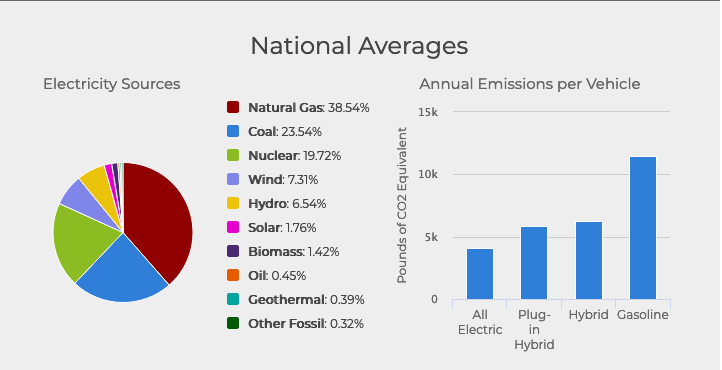
In 8 states, however, regular hybrid vehicles have lower emissions than both BEVs and PHEVs: Hawaii, Illinois Kentucky, Missouri, North Dakota, Utah, West Virginia, and Wyoming.
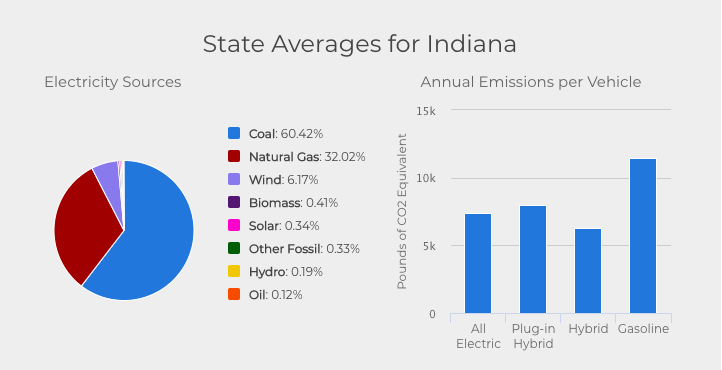
And in 7 states hybrids have lower emissions than PHEVs, but higher than BEVs: Arkansas, Colorado, Montana, Nebraska, New Mexico, Ohio, and Wisconsin.
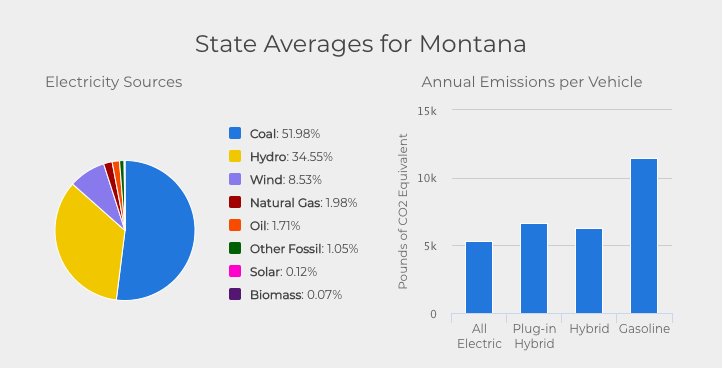
As the above few examples show, national averages are not very meaningful when it comes to the grid sources of energy and emissions comparisons by vehicle powertrain. For example, several states have 0% coal as an electricity source, while West Virginia tops the charts at more than 91%.
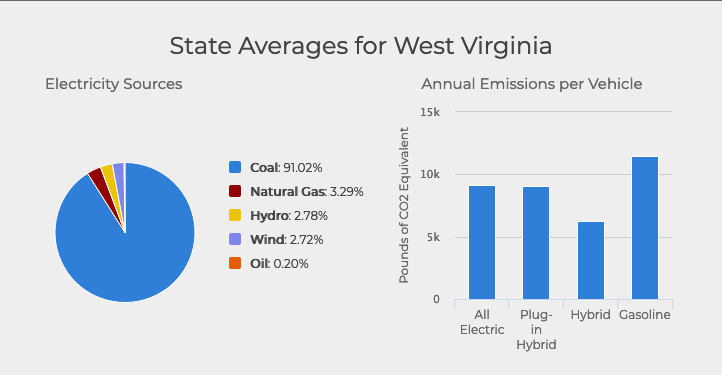
But the impact of a state like West Virginia is basically irrelevant in this conversation as from January 2018 through June 2019, for example, residents of this coal-producing state only purchased 332 BEVs and PHEVs, versus 228,508 in California. When looking at emissions figures and states with “dirty” grids, the number of EVs purchased needs to be factored in.
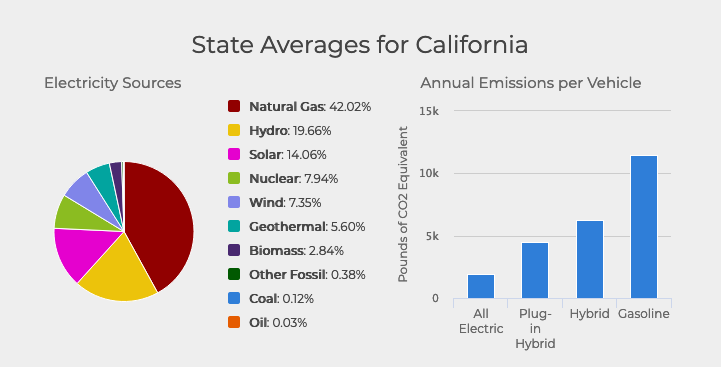
Over that same period, California accounted for 47% of EV sales in the US and the current grid sources include only 0.12% from coal and 42.55% fossil fuel sources. In California a BEV would produce only 16.8% of the emissions from a similar gas-powered vehicle.
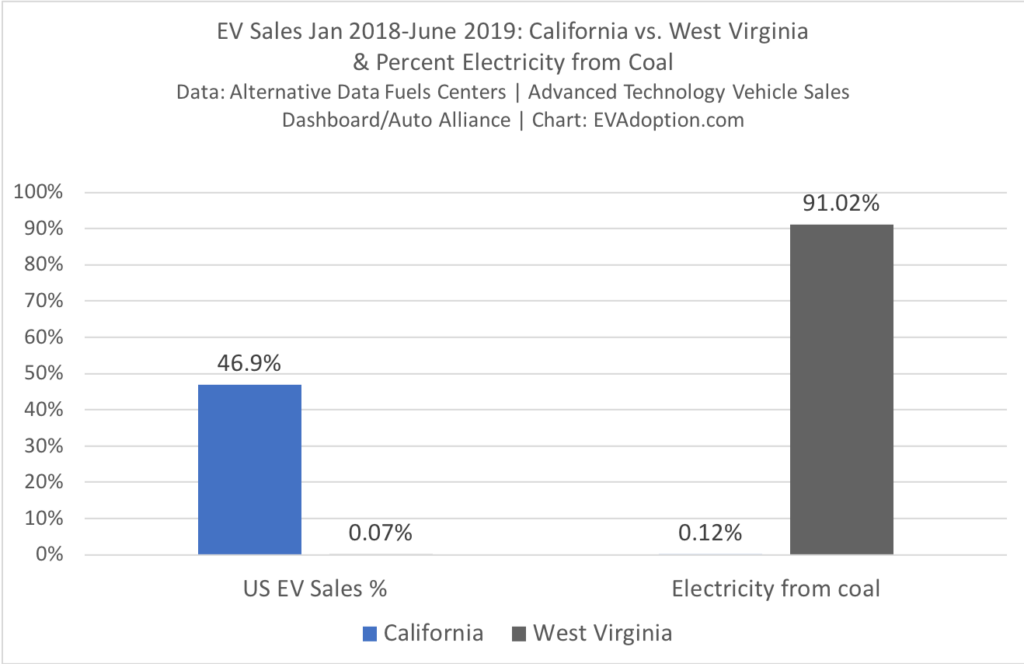
If we look at the states that combined account for 80% of US EV sales from January 2019 to June 2019, the average percent of coal used to generate electricity across those 13 states is 11.6%. Renewables account for an average 24.5% of electricity generation source across these states.
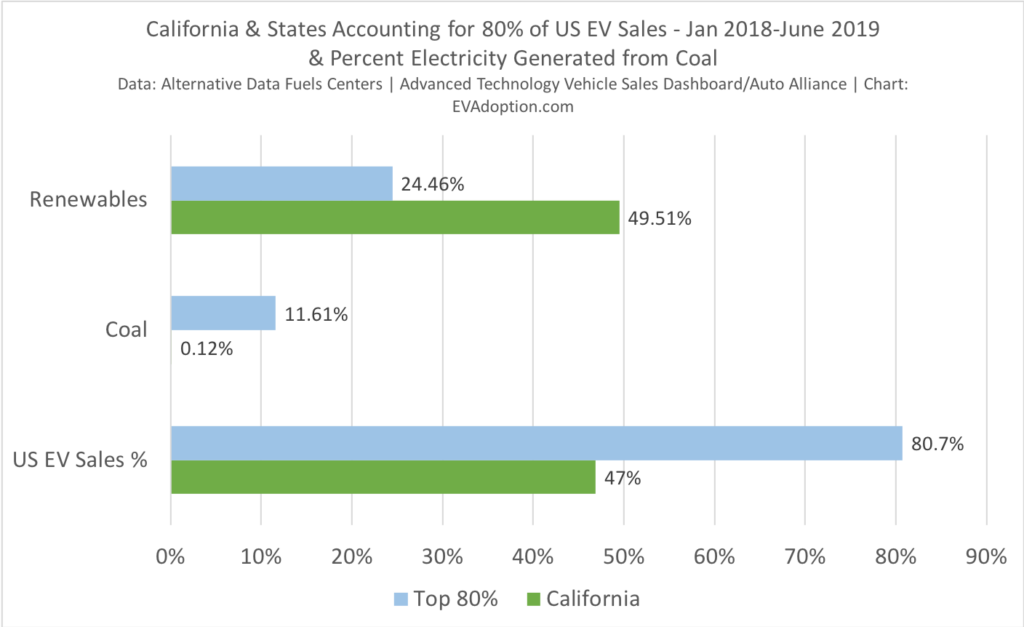
Diving in a bit deeper, we can see that the percentage of coal and renewable electricity sources varies widely across the top 13 states that account for 80% of US EV sales. Five of the 13 states have near or above 25% of their electricity generated from renewable sources.
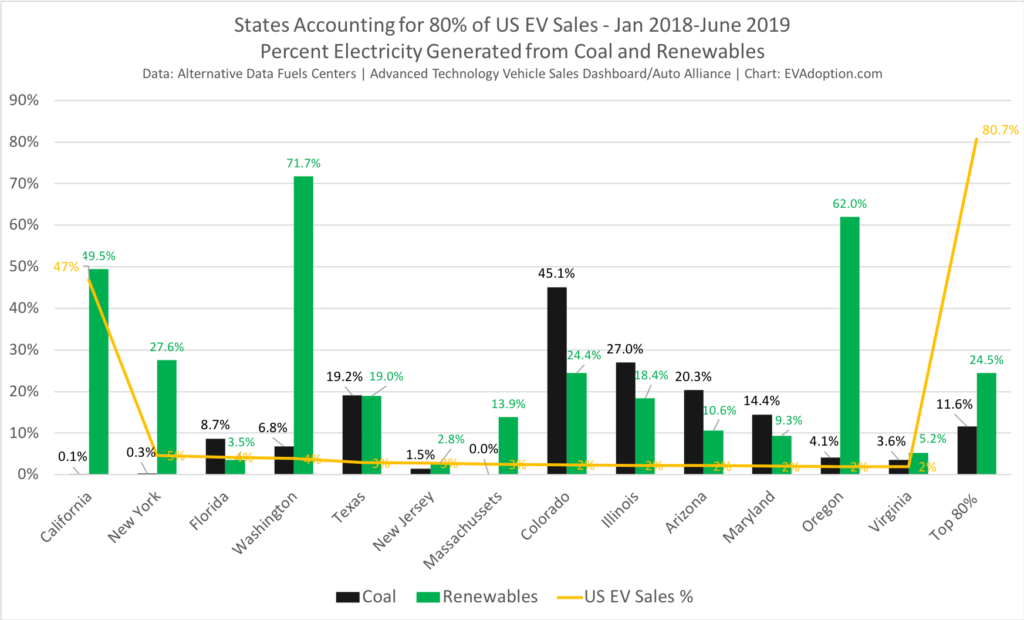
On the other hand, only two states – Colorado (45.1%) and Illinois (27.0%) have one-fourth or more of their electricity generated from coal. Five of the 13 states have coal as an electricity source accounting for more than 10% of the total, while 9 of the states have greater than 10% of electricity from renewables.
Someone on Twitter pointed out that many or most EV owners mostly charge in the middle of the night when renewables, and particularly solar generated electricity, are not flowing through the grid. And while that is true, numbers matter. California, for example, has a pretty decent percentage of solar powering its grid at 14%, but the EIA pegs solar at only 1.76% nationally.
Because solar is still a relatively small percentage of grid electricity sources in most states, even if you factor in charging in the middle of night, the emissions figures would not change much still generally favor BEVs over hybrids and gas vehicles.
With the cost of utility-grade solar and wind energy continuing to decline and coal on a death slide, the question of whether electric vehicles produce fewer emissions than gas-powered vehicles will soon be a fact that no one can argue with.



2 Responses
You forgot to include Indiana in list of states where regular hybrid vehicles have lower emissions than both BEVs and PHEVs (look at the diagram right below that states listed)
And calculations should include manufacturing and recycling emissions for electric vechicles (I know that`s conclusions would be the same, BEVs (and in lesser extent and only if charged – PHEVs) would have much less emissions that of ICE and even more so with decarbonisation of power supply and manufacturing of EVs, but it need to be included for comprehensive analysis just like it included in UCS EV emissions research and others. I presumed that it`s already included but on DOE link I didn`t found any mention of it)